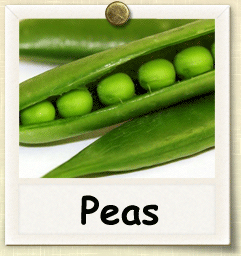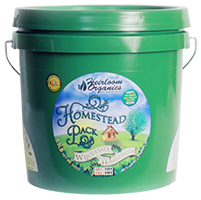|
Home > Guides > Legumes > Pea |
|
How to Grow Pea | Guide to Growing Peas |
|
|
|
|
| |
 |
|
Overview |
|
|
|
|
|
| |
|
| |
Like sweet corn, peas are at their tastiest immediately after harvest. Whether you choose shell or edible-pod peas, they grow best during spring and early summer when temperatures are between 60 F to 75 F. |
|
| |
|
|
| |
Growing Guide
GROWING NOTES
Yields best in full sun.
Prefers well-drained soil, average fertility, high in organic matter with pH 6.0 to 7.0. Widely adapted, but prefers cool, damp weather. Good soil structure is important. Avoid compacting soil by working it when it’s still too wet.
Leafless varieties have particularly fine texture.
MAINTAINING
Sow seed in spring as soon as you can work the soil - as early as late March or early April depending on how quickly the soil warms and dries. Peas planted in cold soil (40 F) are slow to germinate. Later plantings made when the soil is warmer (60 F or more) often catch up quickly with earlier plantings. Use raised beds if your soil is slow to drain.
Make additional plantings through early- to mid- May, or plant varieties with different maturity dates to increase the harvest period.
Plant seeds 1 to 2 inches deep, 1 to 4 inches apart in rows 18 inches apart. Or sow about 1 inch apart in a 3-inch-wide band (about 25 seeds per foot). Shallow planting is best when soils are cool and wet. Plant deeper if soil is dry. A quick way to seed is to make a furrow or trench with a hoe, place seed in the furrow, cover and firm. Do not thin.
Erect trellis for tall-growing, vining types at planting using chicken wire, brush or other suitable trellis material. If trellising, increase row spacing to 4 to 6 feet.
Keep soil moist, but avoid heavy watering during flowering, which can interfere with pollination.
Intercrop peas with fast-growing cool-season crops such as spinach or radishes. After final harvest, follow with late squash plantings or fall-harvested cool-season crops such as broccoli, leeks or potatoes.
Sow fall crops about 8 to 10 weeks before first frost date. Fall crops can be disappointing if hot weather persists. Powdery-mildew-resistant varieties are best for fall crops.
Do not use high-nitrogen fertilizers. Too much nitrogen will result in lush foliage but poor flowering and fruiting. Inoculation with rhizobia bacteria may be beneficial if peas have not been grown in the past.
Do not plant peas in the same place more than once in every 4 years. Avoid planting where in places where peas have suffered before from root rot.
|
|
| |
|
| |
Heirloom seeds are the gardeners choice for seed-saving from year-to-year. Learning to save seeds is easy and fun with these books. Before you harvest, consider which varieties you might want to save seeds from so that your harvesting practice includes plants chosen for seed saving. Be sure to check out our newest seed packs, available now from Heirloom Organics. The Super Food Garden is the most nutrient dense garden you can build and everything you need is right here in one pack. The Genesis Garden s a very popular Bible Garden collection. The Three Sisters Garden was the first example of companion planting in Native American culture. See all of our brand-new seed pack offerings in our store.
|
|
| |
|
|
| |
Harvesting Guide
HARVESTING
Pea pods usually measure anywhere from 1-3/4 and 6 inches. They are best harvested when they are slightly immature as this will give you the sweetest taste. The peas that are ready first will be located at the bottom of the plant and once they are ready start picking because this will encourage the plant to produce more. You will know they are ready when the pod looks green, shiny, and puffy and you pinch the pod you can feel fully formed round fruit. Another way to check is to look at the seam on the sides of the pods. Rip peas will change from a convex to a concave shape. To pick peas hold on to the pod with one hand and vine with the other and tug it off. They tend to want to hold on to the vine so make sure you don’t tug the vine out of the ground.
If you are growing snap peas make sure to pick them before the peas inside the pod fill out as their sweetness diminishes as the seed grows. Snow peas should be harvested when the pods are still flat.
Peas quickly loose their sweetness after harvesting so make sure to use them immediately. If you don’t need them right away make sure to freeze them to preserve their flavor.
SAVING SEEDS
Save pea seeds by allowing the pods to ripen on the plants until they’re dry and starting to turn brown, with the seeds rattling inside. This may be as long as a month after you would normally harvest the peas or beans to eat. Strip the pods from the plants and spread them out to dry indoors. They should dry at least two weeks before shelling, or you can leave the seeds in the pods until planting time.
|
|
| |
|
|
|
| |
|
|
|
|
|
| You can find this variety in the following Seed Packs: |
|
  
  |
|
| Click the packs below to see some of our other wonderful products |
|
|
|
|
|
|
|